Seaweed
What's with all the seaweed? Pelican Cove is a mess! Does this happen often? Any remedy, or just Mother Natures sense of humor?
It's seasonal but has been heavier than normal this year. It's on its way out.
Not just here.
Cancun beaches are impacted worse than we are.
CD
much heavier than i have ever seen. it happened last year but only for a week or so. this year it has been months.
also when i went to the beach and it had seaweed, the allergies were crazy
Do they burn easily? It would be nice if each beach could have a contained burn area where seaweed that collects on the beach could be deposited and burned. Weekly seaweed bonfire, anyone?
Seaweed: Fuel and Food of the Future
By Jenna Iacurci Oct 09, 2014 05:14 PM EDT
http://www.natureworldnews.com/articles/9499/20141009/seaweed-fuel-and-food-of-the-future.htm
Seaweed may be the root of the damaging algae bloom problem happening in some states, but scientists are realizing its untapped potential as a source of food and fuel for the future, new research describes.
Seaweed may be the root of the damaging algae bloom problem happening in some states, but scientists are realizing its untapped potential as a source of food and fuel for the future, new research describes.
"The fact is that algae can absorb nitrogen from the water as effectively as a wastewater treatment plant," Fredrik Gröndahl, a KTH Royal Institute of Technology researcher, said in a statement.
Certain species of algae, commonly known as seaweed, tend to release a cyanotoxin when they bloom that can be harmful to humans and sea-life in high enough concentrations - a problem currently being seen in Ohio's Lake Erie.
"But, in our research, we turn the argument on its head and see algae as a resource," added Gröndahl. "We collect excess algae along the coasts and cultivate new algae out at sea."
Already, seaweed is getting scooped up from the Baltic Sea, along Sweden's southern coast, in order to be converted to biogas. One Swedish city specificially, Trelleborg, estimates that its beaches are home to algae that is equivalent to the energy from 2.8 million liters of diesel fuel.
Oceans make up about 75 percent of Earth's surface, and under the surface is untapped land that can be used to house algae "seafarms." Currently, the world uses 40 percent of the production from land-based ecosystems compared to just one percent of the seas' ecosystems. And this small percentage isn't even used for energy production, but rather mostly for the fishing industry, which trawls the ocean floor extensively.
"We really need new solutions, such as harvesting the excess algae for fuel and cultivating new, pure algae for special products and foodstuffs," Gröndahl said.
Not to mention that seaweed contains vitamins, amino acids and minerals, including iron, making it beneficial for food consumption as well. So not only can you eat seaweed, but it can potentially solve the world's current fossil fuel problem, which is contributing to the Earth's greenhouse gas effect and exacerbating climate change.
"What's more, we're also acting to help the environment," the researcher said. "Partly, when we make use of the excess algae which otherwise contribute to the excess fertilization of water bodies and partly when we cultivate algae that actually absorb nitrogen and phosphorus from the sea."
Gröndahl is currently heading what is called the Seafarm project, which aims to create underwater algae farms for fuel and food purposes. The algae grow on ropes and after six months time are harvested and processed on land through biorefining processes. While there are concerns that so much seaweed - about five acres worth to start - could hypothetically influence movements in the water and the marine environment, Gröndahl is confident in the project's success.
"In 15 years time, we will have many large algae cultivations along our coasts; and Seafarm will have contributed to the creation of a new industry," he said.
Do they burn easily? It would be nice if each beach could have a contained burn area where seaweed that collects on the beach could be deposited and burned. Weekly seaweed bonfire, anyone?
If you have a garden it makes excellent compost but needs to be spread out, hosed down and left to degrade for a while out in the open to get rid of all the salt.
So not only can you eat seaweed ...
As a child living by the North Sea in England we (my family) regularly gathered, cooked and ate a certain seaweed which grew in abundance.
Seaweed is a term applied to multicellular, marine algae which are large enough to be seen by the eye unaided. Some can grow to up to 60 metres in length. Seaweeds include members of the red, brown and green algae. They are members of the kingdom Protista meaning they are not Plants. They do not have the vascular system (internal transport system) of plants and do not have roots, stems, leaves and flowers or cones. Like plants they use the pigment chlorophyll for photosynthesis but also contain other pigments which may be coloured red, blue, brown or gold.
They are divided into three groups:
Brown Algae (Phaeophyta)
Green Algae (Chlorophyta)
Red Algae (Rhodophyta)
Blue-green algae are not marine algae. They are in a group called cyanobacteria and are more closely related to bacteria. Some cyanobacteria form brown, green, red or purple tufts on coral reefs.
To survive seaweeds need salty or brackish water, sunlight and a surface to attach themselves to. Because of these factors they are generally found in the littoral zone (this includes the intertidal zone but generally extends out much further). They are usually found on rocky rather than on sand or shingle shores.
Seaweeds are a food source for marine animals such as sea urchins and fishes, and are the base of some marine food webs. They also provide shelter and a home for numerous fishes, invertebrates, birds and mammals.
The kelps form dense forests which support entire underwater communities providing both food and shelter. Intertidal seaweeds can be exposed to many environmental stresses including drying out when not under water, temperature and salinity changes and wave action.
Structure of seaweeds
Thallus: the entire body of a seaweed.
Lamina: a flattened structure that is resembles a leaf.
Sorus: a cluster of spores spore.
Air bladders: a hollow, gas-filled structure organ which helps the seaweed float, found on the blade). Other seaweeds (e.g. kelp) have floats which are located between the lamina and stipe.
Stipe: a stem-like structure, not all seaweeds have these.
Holdfast: a specialized structure on the base of a seaweed which acts as an “anchor” allowing it to attach to a surface (e.g. a rock).
Haptera: finger-like extensions of holdfast anchoring to benthic substrate.
Seaweeds play a very important roles in many marine communities. They are a food source for many marine animals such as sea urchins and fishes, and form the base of some food webs. They also provide shelter and a home for numerous fishes, invertebrates, birds, and mammals.
Seaweed life and reproductive cycles can be quite complicated. Some seaweeds are perennial, living for many years, while are annuals. Annual seaweeds generally begin to grow in the spring, and continue throughout the summer. Some red seaweeds have a life span of 6 to 10 years.
Seaweeds can reproduce sexually, by the joining of specialized male and female reproductive cells, called gametes. After they are released from the sporophyte, the spores settle and grow into male and female plants called gametophytes. The gametophytes produce gametes (sperm or eggs). The sperm and eggs are either retained within the gametophyte plant body, or released into the water. Eggs are fertilized when the sperm and egg fuse together, and a zygote is formed. Zygotes develop and grow into sporophytes, and the life cycle continues.
Seaweeds display a variety of different reproductive and life cycles and the description above is only a general example of one type, called alternation of generations. In a few species there is an alternating sexual and asexual reproductive process with every generation.
Seaweeds can also reproduce asexually through fragmentation or division. This occurs when parts of a plant break off and develop directly into new individuals. All offspring resulting from asexual reproduction are clones; they are genetically identical to each other and the parent
Seaweeds area food source for humans especially in East Asia, it is most commonly associated with Japanese food. Seaweeds also are used to make a number of food additives such as alginates and carrageenan which is used in cooking and baking as a vegetarian alternative to gelatine.
Many seaweeds are used as medicine. Alginates are used in wound dressings and in the production of dental moulds and agar is used very widely in Microbiology to help grow bacterial cultures.
Seaweeds are ingredients in toothpaste, cosmetics and paints and are used in industrial products such as paper coatings, adhesives, dyes, gels, explosives and many more.
Much of the oil and natural gas we use today formed from seaweeds which partially decomposed on the sea floor many millions of years ago.
Japanese food uses seaweeds extensively - Kombu a brown alga and Kim nori a red alga
Nori
References
http://en.wikipedia.org/wiki/Seaweed
/www.oilgae.com/algae/types/marine_algae/marine_algae.html
www.reef.crc.org.au/discover/plantsanimals/algae/index.html
/www.cornishseaweedresources.org/lifecycle.htm
http://marinelife.about.com/od/plants/tp/typesofalgae.htm
/www.reef.crc.org.au/discover/plantsanimals/algae/index.html
http://en.wikipedia.org/wiki/Brown_algae
http://en.wikipedia.org/wiki/Red_algae
http://en.wikipedia.org/wiki/Green_algae
www.seaweed.ie/algae/chlorophyta.html
If any gardeners are interested in collecting some of the washed-up sargassum for compost, you might be interested in this article:
http://monroe.ifas.ufl.edu/pdf/Hort/Composting/Using_Seaweed.PDF
I was at Columbus Landing beach a few different days in early July. First couple of days there was so much sea weed floating in the water just off the beach as well as on the beach edge that it was impossible to get into the water without going through all of it and had to go out past waste deep to clear it.
A week later it was all gone.
Don't get me wrong, I fully appreciate the possibility of seaweed becoming the next best thing to corn and soybeans and wheat ( sans gluten) as a cash crop. I can see an endless supply of nutrients and micro nutrients and many other economic and humanitarian solutions. I just wish it had found some other place to hang out for the month I have set aside to enjoy unencumbered strolls along the beach
Don't mean to break anyone's bubble but I saw man severely chastised by a DPNR officer for collecting sea weed from the beach for his garden. The officer got very upset saying that nothing and I mean "NOTHING" can be taken for the beaches of the USVI.
Don't mean to break anyone's bubble but I saw man severely chastised by a DPNR officer for collecting sea weed from the beach for his garden. The officer got very upset saying that nothing and I mean "NOTHING" can be taken for the beaches of the USVI.
Gotta love the zealousness and dedication to duty! No DPNR badge-wearers on the beaches I go to!
We live out by Divi. PLEASE, PLEASE, PLEASE come and take some of the seaweed away! I'll even help you plant your garden.
I wish I could say it's on it's way out but I just walked down to the Palms and the seaweed was literally head high between the shore and the waters edge and I've only been here since January 1st. It really is a natural phenomenon.
It's like Christmas every day!!! I Love the sargassum algae, it's SOO amazing what life you'll find in there, it's really a great thing - did u know lobster live their first year of life in algae like sargassum? While it may be annoying it's so important and necessary to ocean health. Here's a few recent jems I've found - life adrift. <3!
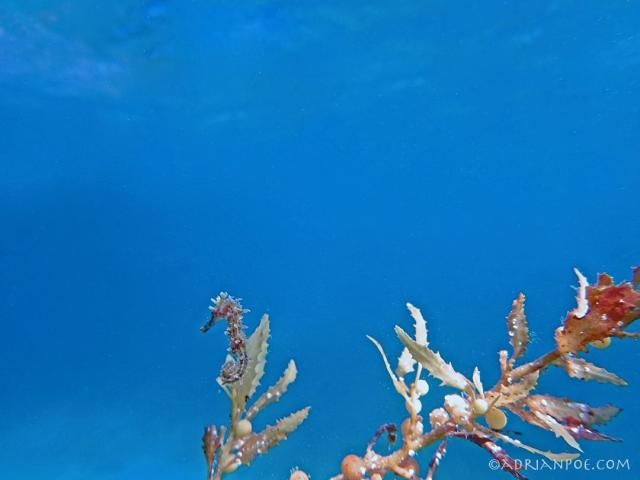
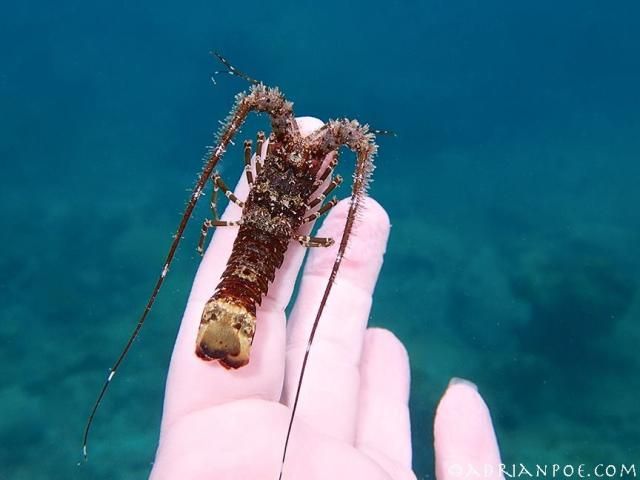


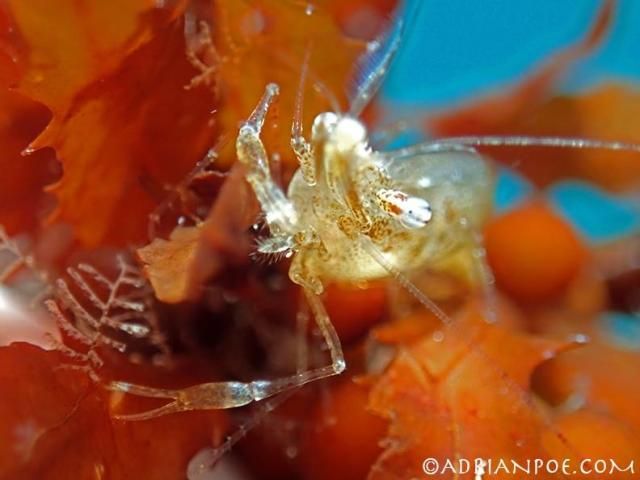
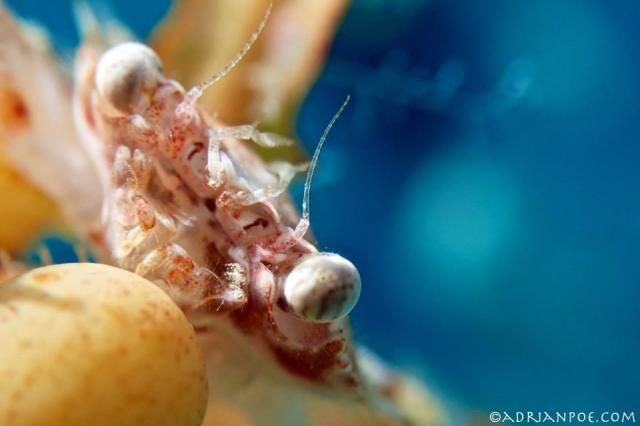


And I am in love with these TINY sargassum shrimp. They are so cool and come in a variety of colors patterns and have these really bright blue dots. So cool and when I should tourists these shrimp their minds are blown 🙂
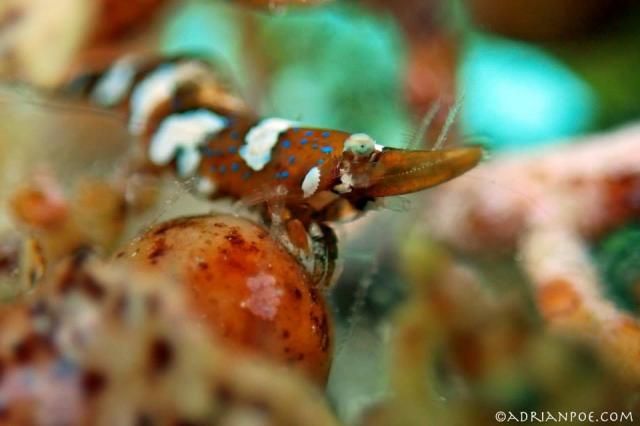
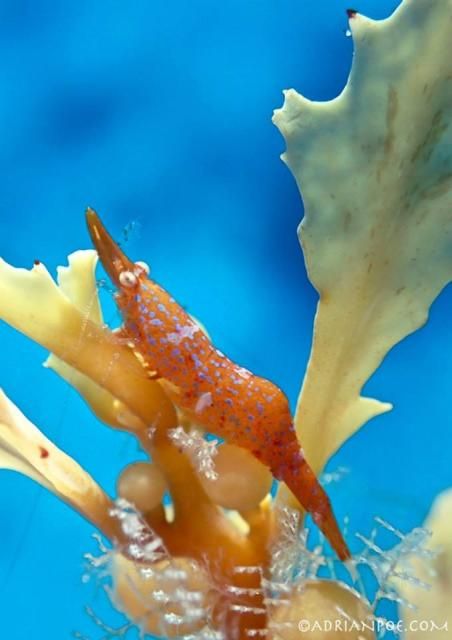
Yes my fingers look weird in macro pruned up lol.
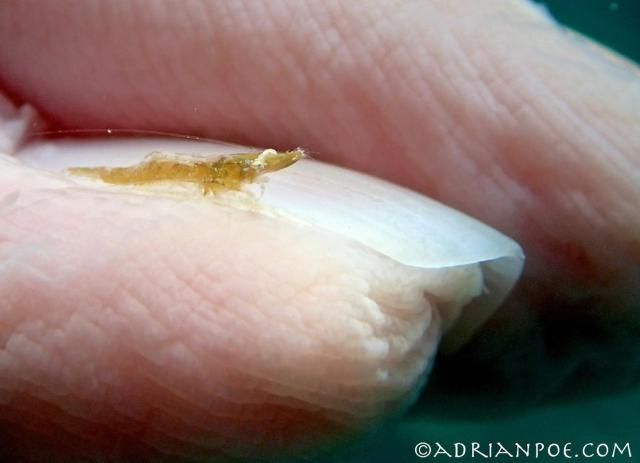
Baby barracuda!
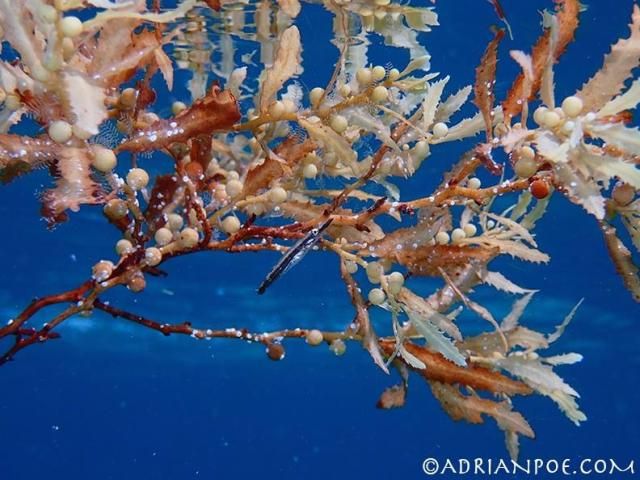
Baby rainbow runner

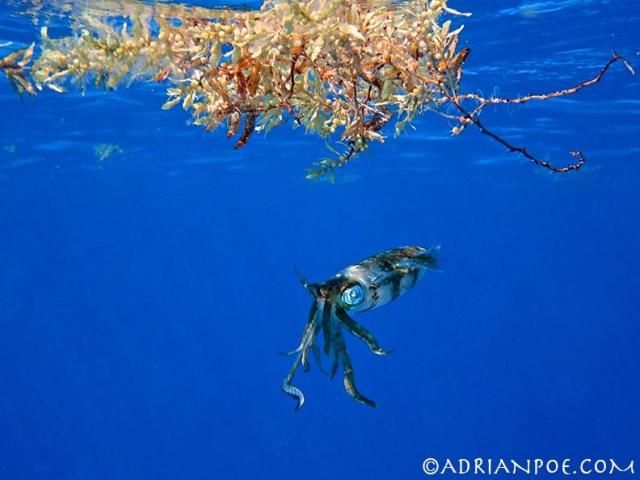
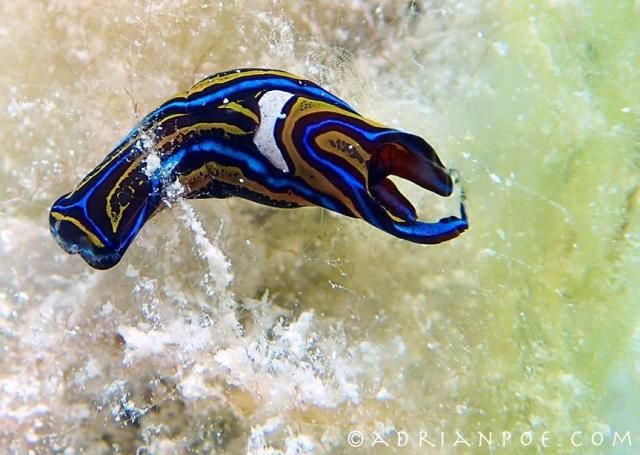
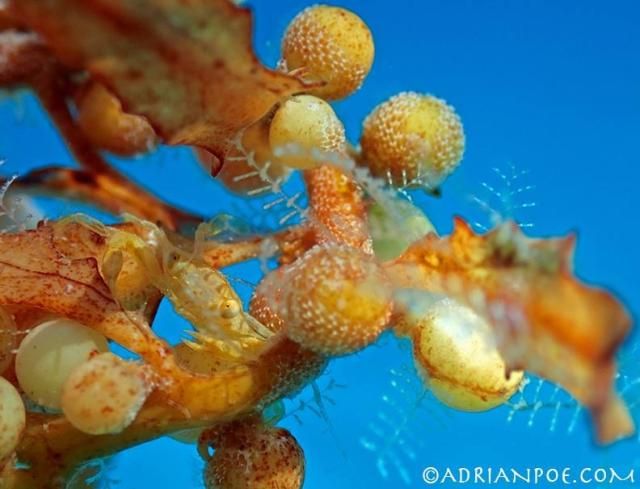
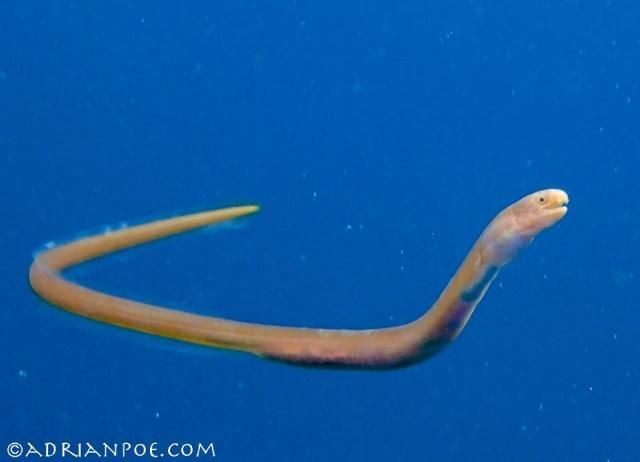
And one for fun - not in sargassum but I caught this squid right during his lunch break... do you see it?
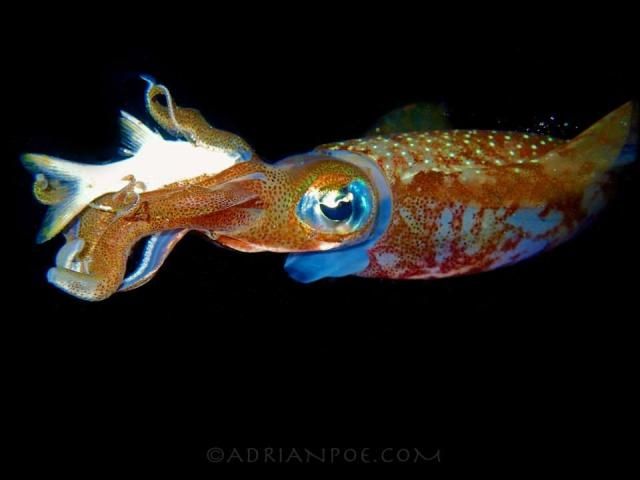
Where is it coming from? I mean is it from the deep areas of the ocean or is it coming from the coast of Africa?
Where is it coming from? I mean is it from the deep areas of the ocean or is it coming from the coast of Africa?
Answers are here:
Great pics, Adrian!
Thanks for sharing the amazing quantity of sea life that depend on seaweed.
Here's another STJ Tradewinds article: http://www.stjohntradewindsnews.com/index.php/608-news/2014-12-news/9232-sargassum-seaweed-hits-north-shore-beaches
Where is it coming from? I mean is it from the deep areas of the ocean or is it coming from the coast of Africa?
The Sargasso Sea - it’s that patch of calm water near the Caribbean where sargassum seaweed collects in vast mats. But most of the sargassum of the Sargasso Sea really comes from the Gulf of Mexico, where the brown algae with little pea sized air pockets grows like crazy. The Gulf has the second largest concentration of sargassum of any ocean in the world. A fair amount of it washes out through the straights of Florida on the Gulf Stream and ends up in the Sargasso Sea in the Atlantic Ocean off the East Coast of the United States.
Info from: http://www.loe.org/shows/segments.html?programID=10-P13-00029&segmentID=2
Some types of seaweed are very beneficial and are regularly harvested from the seashore. In some areas such as coastal Vancouver Island, the harvesting of seaweed is causing a stir with waterfront residents as machinery is often employed in the harvest. Is this type of seaweed in demand or have any particular value?
I wonder is this seaweed can be used to supplement the cane grass once Tibbar is up and running?
- 4 Forums
- 32.9 K Topics
- 272.5 K Posts
- 646 Online
- 43 K Members


